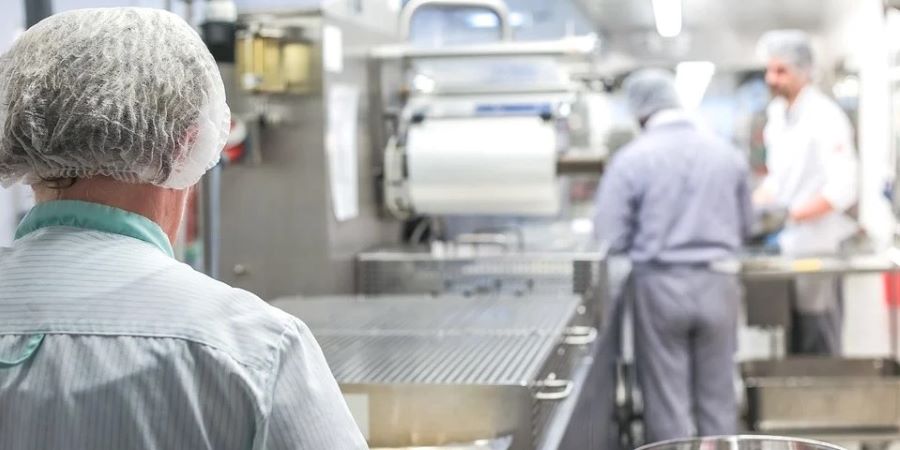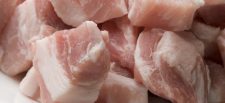SPECIAL FEATURE – Automation:
The food manufacturing and processing sector is one that has a complex relationship with automation systems. Although ever-growing market demands mean that manufacturers value the greater efficiency, reduced operating costs and maximum uptime afforded by automation, the need for flexible machines has led some to question the suitability of traditional automation systems. Here, Stephen Hayes, managing director of food specialist Beckhoff UK, explains how automation technologies can support greater flexibility in food manufacturing.
“It is not a controversial statement to say that the coronavirus pandemic has significantly shifted the priorities and plans of many food and beverage manufacturers. Before March 2020 when the pandemic took hold in the UK, many manufacturers had established their priorities for the year ahead: a focus on flexibility in production and machinery, building on the efficiency and automation focusses that many held previously.
The food industry is one that, in ordinary circumstances, experiences a higher demand for variety than most other markets. In a 2018 survey, bakery supplier Puratos found that 80 per cent of respondents globally would definitely invest in personalised products — specifically bread, in the case of the survey. This is one example of the wider move in the food industry to greater product customisation and variety expected by consumers, to which brands must oblige.
In a food manufacturing industry report published at the start of 2020, the increased focus on flexible production led automation to fall slightly lower on the priority list for manufacturers, ranking at number five. The president of the US’ Specialty Food Association suggested the connection between the two, stating that although the need to invest in automation of manufacturing processes will continue, “flexibility to produce zero defect products that are unique and maybe modified within the manufacturing process will be the focus of food manufacturers.”
Mass customisation requires a great level of adaptability and flexibility in production processes, with modular production layouts proving key to this. The challenge here is that many automated machines in these production lines are not modular or movable in nature. They remain wired into specific areas and the time commitment of disassembling, manoeuvring and reassembling these systems is not worth it for most manufacturers.
However, variety and customisation both became much less of a focus during the pandemic, when production processes had to be streamlined to reduce costs. Mondelez International, the company behind brands such as Oreos, Belvita and Tuc, announced in mid-2020 that it would be reducing its number of product stock-keeping units (SKUs) to ease production challenges.

Instead, as food manufacturers have faced substantially restricted workforces due to the new health and safety guidelines, automation technology has once more become a focus.
It can be reliably assumed that the move away from variety as priority is a short-term shift for food manufacturers. As countries emerge from the grips of the pandemic, customer demand for customisation will return. As such, it’s important that food manufacturers consider systems that can support not only an increase in production efficiency, but flexibility with it.
Flexibility in automation
Although some manufacturers think otherwise, flexible automation systems exist and can allow food businesses to reap the benefits of increased productivity and product variety without increasing stoppage time. There are two ways this is achievable: with reduced cabling in physical systems, and with greater control over process speed and patterns.
Food automation systems typically require complex motion and high throughput speeds, which generally necessitates larger, bulkier designs with numerous running cables. Not only do these systems occupy larger footprints and reduce available floor space, but the cabling complexity also makes manoeuvring systems more difficult, hindering process flexibility.
The easiest way to introduce greater flexibility into such a line is to consider automation technologies that reduce cabling requirements. This is something that Beckhoff has recently focussed on in its Automation Without Cabinets concept, which encompasses automation technologies that reduce cabling and allow for smaller machine footprints with smaller control cabinet requirements. The reduced cabinet size means they can be positioned closer to the machine, reducing space requirements, and the reduced cabling means that systems can be moved around production lines easier.
However, flexible control of system speed and motion is vital to ensuring manufacturers can achieve flexibility and efficiency without producing costly excess waste. For example, a meat processing company might find that flexibility means offering different sizes and cuts of meat. Although it is theoretically possible for a single automated system to achieve this, it would typically require a performance trade off: variability of product sizes at the expense of throughput speed, or vice versa.
This is a challenge that Beckhoff worked with a Danish processing equipment manufacturer to help meat manufacturers overcome. Borncut A/S, based in Rønne, Denmark, developed what it refers to as the world’s fastest and most precise portion cutter for the food industry. The machine allows fish or poultry to be rapidly cut into exact portions with knives that rotate at speeds of up to 200 km/h, capable of making more than 2100 cuts per minute.
Based on specially developed software and the TwinCAT open control platform from Beckhoff, the machine’s speeds are possible primarily due to the high performance of EtherCAT communication. This is because EtherCAT enables the control components in the machine and a high-speed camera to communicate with each other very rapidly. This results in an extremely efficient process flow that can be quickly adapted from a single panel PC, maintaining maximum uptime.
The fast communication between vision system input, intelligent algorithms and motion component control means that product waste is reduced, throughput continues at a rapid speed and flexibility of product size is supported. Using efficient fieldbus protocols like EtherCAT makes benefits like this achievable, allowing more food manufacturers to get the efficiency and flexibility needed to satisfy present and future market demands.”









